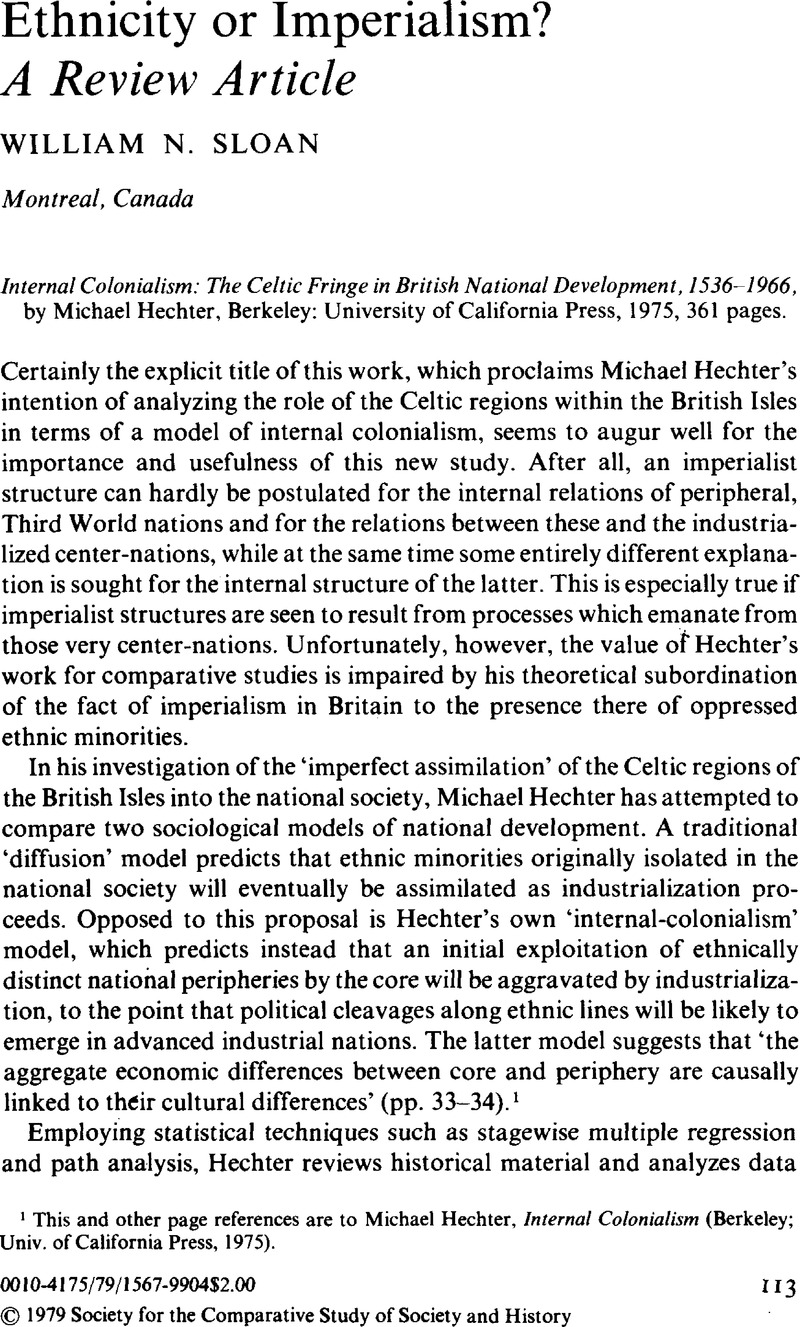Article contents
Ethnicity or Imperialism? A Review Article
Published online by Cambridge University Press: 03 June 2009
Abstract

- Type
- Regionalism: A Debate on Hechter's Internal Colonialism
- Information
- Copyright
- Copyright © Society for the Comparative Study of Society and History 1979
References
1 This and other page references are to Hechter, Michael, Internal Colonialism (Berkeley; Univ. of California Press, 1975).Google Scholar
2 E.g., see Chilcote, Ronald, ‘Dependency: A Critical Synthesis of the Literature’ in Latin American Perspectives, Vol. 1, No. 1 (Spring 1974), 10–12.CrossRefGoogle Scholar
3 E.g., see Frank, Andre Gunder et al. , Dependence and Underdevelopment (New York: Doubleday & Co., Inc., 1972)Google Scholar or Frank, A. G., Lumpenbourgeoisie: Lumpendevelopment, trans. Berdecio, Marion D. (New York: Monthly Review Press, 1972).Google Scholar By ‘lumpenburguesia’ Frank refers to that local class of raw-material exporters and, eventually, of industrialists who serve in Latin America as the ‘tool of foreign industry and commerce’ (see ibid., 5 & 9).
4 Galtung, Johan, ‘A Structural Theory of Imperialism’ in The African Review (Dar Es Salaam), 1:4 (04 1972), 93–138.Google Scholar Through the construction and preliminary trial of a model of ‘perfect imperialism,’ Galtung has attempted to specify in broad terms the structural criteria by which imperialism might be identified and studied in any specific case. Briefly, a ‘perfect’ case would include five ‘types’ of imperialism (economic and other), two ‘mechanisms’ (bipolar and network-like structures of dominance relations), and three ‘criteria’ (an alliance, or ‘harmony of interest,’ between cC and cP, the absence of one between pC and pP, and a wider center/periphery gap within P than within C). See esp. pp. 97, 100, 109.
5 Hechter does mention briefly in his conclusion, however, that a wide gap exists between the situation of Celtic and that of peripheral nation minorities, and that the collision of these two groups on the English labor market might not result in fraternal bliss (pp. 348, 351).
- 8
- Cited by




